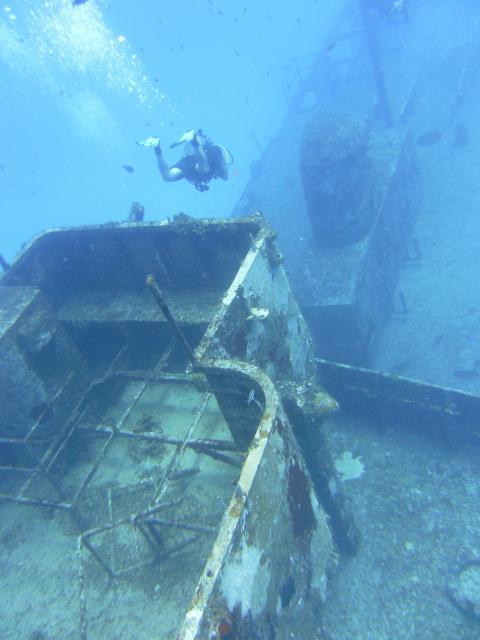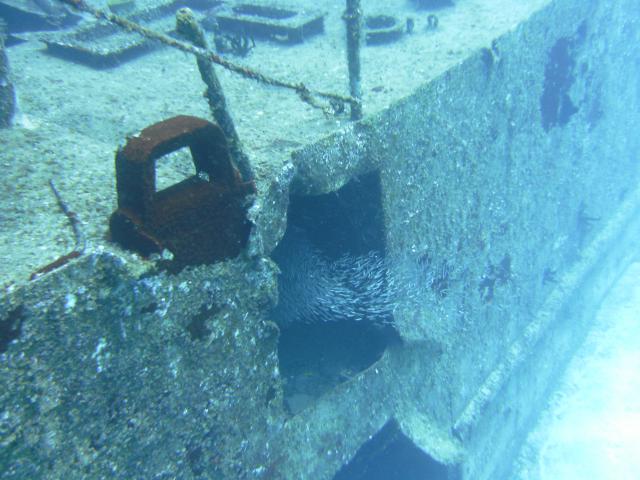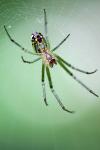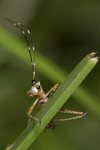Cozumel 2010: Assortment
ktuli — Wed, 06/30/2010 - 19:37
Just an assortment of photos today... enjoy.
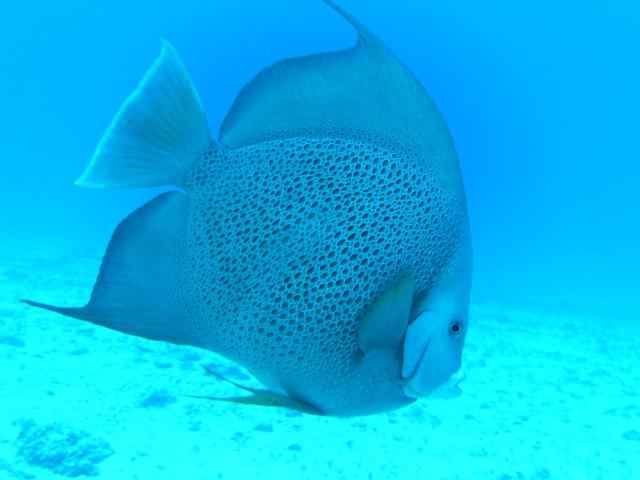

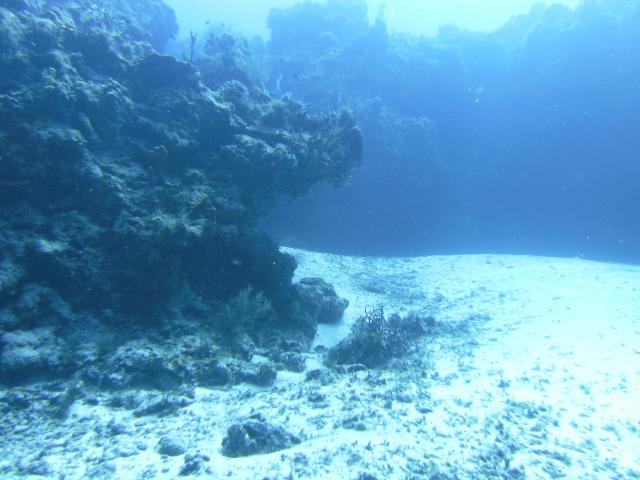
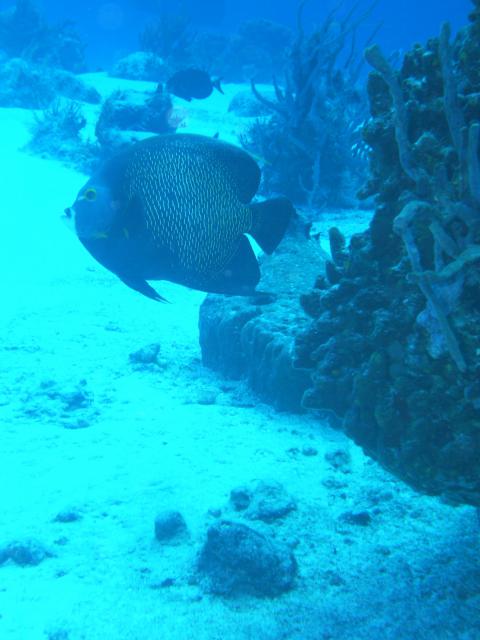
Feel free to leave a critique in the comments if you like.
- Bill
Cozumel 2010: Small and Large
ktuli — Mon, 06/28/2010 - 20:28
Two more photos to share with you today. One of probably the smallest subject I photographed and one of definitely the largest animal I photographed during the dives. Again, I apologize for the bad blue color cast to the photos, these really aren't great photos, but I wanted to share them anyway.
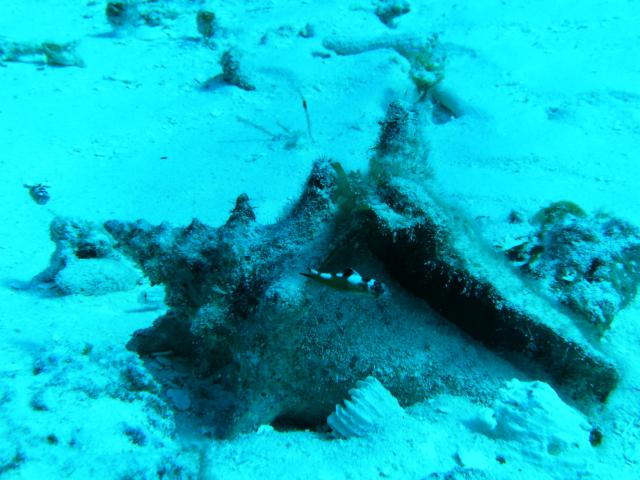
If you're confused at what you're looking at there, I apologize, the scene was really much more interesting without that blue color over everything. Almost dead center of the photo, you'll see a small fish. There was a pair of these fish using this shell as a home (the other is on the left edge of the photo, but facing the camera and thus hard to distinguish). They were black and white and orange (I think it was orange, but I am second guessing myself now) and I almost completely missed them, but cause a flash of color as they darted into their shell. I managed to get myself down and out of the current and sat patiently waiting until they came back out of their hiding spot and went back about their business. They really were fantastic little fish, and I wish I could have come back with a better photograph of them. Oh yeah - and they couldn't have been more than half an inch long.
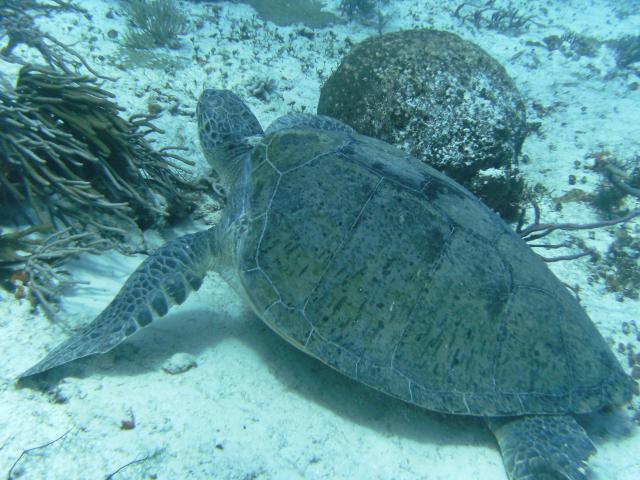
This guy, on the other hand, was absolutely massive. No lie, he was the size of a small car. I would have liked to have gotten a shot of him with something to give the photo some scale, but when we drifted by him, the current was pretty strong. I was towards the front of the group when we saw this behemoth, and honestly I didn't realize what I was looking at was a turtle at first. He had his head tucked under the coral branches you see in the left of the photo. As our group approached, he gently lifted his head, checked us out, and decided it was time to find somewhere else to nap. There is someone in our neighborhood that has one of those Smart Cars, and I think this this was about the same size as that car. We saw turtles on pretty much every dive we went on last week (including one that landed on our instructor - Mike's shoulder and kicked me in the hand and camera when he swam away), but this one really will stick with me. The others were all generally smaller and had that typical fun quality that sea turtles have to them, and produced a kind of happy, carefree feeling to watch them. This one, however, just seemed to strike me with an overwhelming sense of awe and reverence - to be in the presence of a creature so massive and obviously so old (if I had to guess, this particular turtle was probably three times my age). I remember thinking that this is why I enjoy scuba diving so much - so that I can experience these kinds of creatures first-hand instead of seeing them only on nature documentaries (which I watch tons of). But at the same time, I felt the twinge of sadness knowing that we're destroying the habitat and environment for such majestic creatures such as this.
Large or small, both of these encounters are things I won't soon forget. I know the photos I have of them aren't that clear, but the memories I brought back certainly are.
- Bill
Cozumel 2010: C-53 Wreck Dive
ktuli — Sun, 06/27/2010 - 10:11
This year we dove the C-53 Felipe Xicotenantl wreck in Cozumel.
This was Anya's and my first wreck dive ever. And was it ever fun!
The C-53 is a 184 ft long Mexican Navy Minesweeper. Sunk in June of 2000, it is just starting to get a good amount of coral growth on the hull of the ship. Since the vessel was sunk intentionally for divers, sections of its hull were removed to allow for easier entry into the wreck, and guide lines were installed to show the safest route through the dive. The wreck sits on a sandy bottom at about 80 feet with the main deck only about 60 feet from the surface - you can actually make out the general shape of the wreck from the boat since the water in Cozumel is so clear. With a mask and snorkel, you can view the wreck plainly from the surface (which I did after I used all of my air and waited for the rest of the group to get back on our dive boat.
Part of our group did the full tour of the wreck, following the guide lines and exploring multiple decks of the ship from the inside. Their path took them from the stern of the ship along the various decks and eventually emerging from an opening near the bow. I think they then re-entered from one of the side openings and explored further, but I lost track of them.
Anya and I chose to explore the outside of the ship. We circled the entire wreck, stopping to inspect the propellers (which were the hang-outs for some fairly large and extremely toothy dog snappers). We then followed our dive master Markos on a quick swim-thru of the second deck at mid-ship. At that point in the ship was a fairly large school of silverside sardines (these are actually common in the pet trade as frozen foods). These little fish (which you can see the edge of the school protruding from the opening we entered the boat from) would flee and return around you as you swam through the ship. As I did my swim-thru, I stopped about halfway through, and noticed that the density of the fish both in-front and behind me actually blocked the visibility to the entrance and exit. It was very fun to swim through the group of them.

This was really a fun dive, and it was a great experience to get a wreck dive under our belts. We had a visit from another sea turtle on this dive - in fact we had sea turtles on every dive I think - but I didn't get any good photos of this one. However, this happened to be one of the dives that the resort's videographer came with us, and she got a sequence of the boat from a unique angle with the turtle doing a fantastic swim-by at the exact right moment - I might strip out a still or two from the DVD, but we'll see.
Stop by again soon, as I'll be sharing some wildlife photos including one of a sea turtle we saw that was - no lie - the size of a small car!
- Bill
Cozumel 2010: Coralheads and Divers
ktuli — Fri, 06/25/2010 - 22:01
So I really like photos of coralheads with divers. There is something about the combination that I like - it might be the sense of scale, or just the visual presentation of the activity I've grown to enjoy - but I found myself looking for such opportunities on this year's dive trip to Cozumel.
If you haven't seen the inspirational shot from last year's trip, take a few minutes and go read the discussion of the photoshop adjustments I made to another coralhead and divers photo.
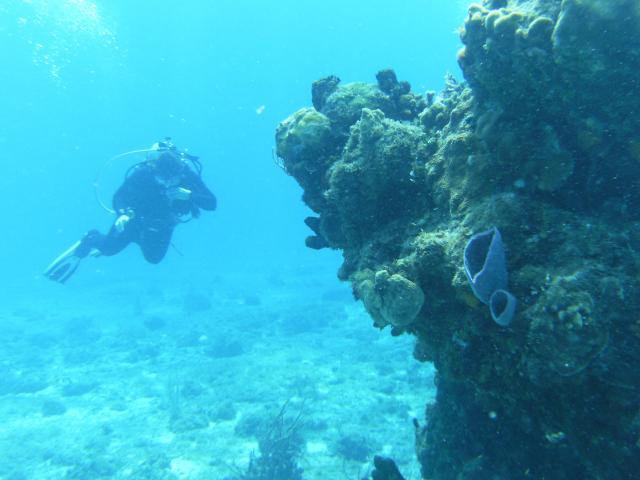
This one I snapped of Anya with this small coralhead in the foreground. I am not overly thrilled with this photo as I didn't like the posture I caught Anya in - she was adjusting some equipment or maybe just finishing up equalizing her ears. You need to get the air pressure inside your ears to match that outside, so as you dive you have to constantly be aware of it and equalize as needed. It becomes something you almost do without thinking or it can really hurt! Think about when you last flew in an airplane or drove to the top of a mountain - did your ears "pop"? That's basically the same thing but with water pressure pressing on your ears and you need to get it to balance on the inside. Anyway - it doesn't make for really great photograph material.
It isn't often that Anya is that far from me during a dive. We tend to be pretty conservative divers and stick pretty close. Plus, just like on our terrestrial photo excursions, Anya tends to be a fantastic spotter, so usually she's just ahead of me pointing out the cool thing to photograph next.
The other coralhead and diver photo is of one of our dive instructors - Brigette. She is the epitome of calm when diving. I am amazed to see a bubble trail coming from her in this photo actually, because many of us believe she doesn't breath at all while underwater (there are rumors of gills hiding somewhere). Brigette almost always gets back on the boat with the most air left in her tank of any of the divers in our group. I think both Anya and I strive to someday be as calm in the water as Brigette.
Anyway, I like this photo a bit more from a technical standpoint. The overall layout - especially with the vertical orientation - helps to provide a different perspective to things. The coralhead in the foreground helps to add to the perception of the size (though it does exaggerate the coralhead to be larger than it was). The placement of the coralhead falls nicely on one of the thirds, providing a nice balance to the photo and produces much less empty blue space than the previous photo.
What I don't like about the photo (aside from the blue color cast) is the lack of depth perception - the photo appears to be extremely flat. That might be fixable in photoshop. Unfortunately, the timing was slightly off here too as I left Brig's fins hidden behind the coralhead, which I feel leaves out a vital element of a photo of a diver. And of course, the color cast causes the coralhead to lose all of its beautiful color and diversity.
Ok - so I guess I could resist critiquing the photos after all... I just took a less formal approach to it. Be sure to stop back again soon as I have wreck photos, fish photos, and maybe some other little surprises in the hopper for additional posts from this trip.
- Bill
Cozumel 2010: Intro
ktuli — Thu, 06/24/2010 - 19:30
Well, I apologize for the long silence in posting, but Anya and I were on vacation last week. We took another dive trip down to Cozumel, Mexico. We go diving with the group we got certified with - Divehards International. This is the second time to Cozumel, and both times we stayed at Hotel Cozumel & Resort and dove locally there with Dive Paradise.
This year, I rented a Sealife DC800 (8 MP) camera and strobe. I have a deal worked out with Divehards International to be purchasing a DC1000 (10 MP) camera and strobe and wide-angle lens kit here shortly. So I will have a dedicated underwater camera that I own since it doesn't look like I will be affording the housing, strobe and arm, and dome port I need to take my 7D underwater (unless someone wants to make a sizable donation) because we're trying to save up for our next dive trip which will hopefully be Wakatobi Restor in the Southeast Sulawesi Sea in Indonesia!
Anyway - back to Cozumel... The majority of the photos from last week did not turn out that great. I think a lot of these will need to be run through Photoshop (once I can figure out the necessary set of adjustments to make). We had some very weird currents while diving last week, so I ended up not being as close to the corals as I would have liked for many shots, and that combined with rookie work with the strobes really made for sub par photos.
So I won't be critiquing these photos, but I'll share some of the most decent ones as well as sharing some dive stories along with them over the next couple days.
I'll start with some photos from our first dive of the week. When we arrived on Saturday, basically the first thing we did was check into the hotel and head for the water to do a check-out dive to get our boyancy figured out and get into the groove of things. Anya and I probably spent 40 minutes or so in the water and I took several shots including this one of this puffer fish.
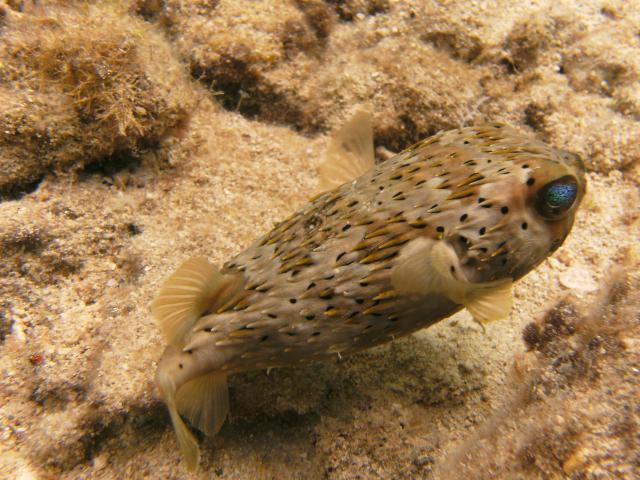
Check out how awesome his eye looks! Unfortunately, it was the last photo all week that turned out nice. About midway through the dive, we stumbled into a field of sea stars that were really cool looking. Some of them were at least 14 inches across, and they were yellow with red or black spikes along them (it was tough to tell the color of the spikes, especially since the red spectrum is the first to go away underwater).
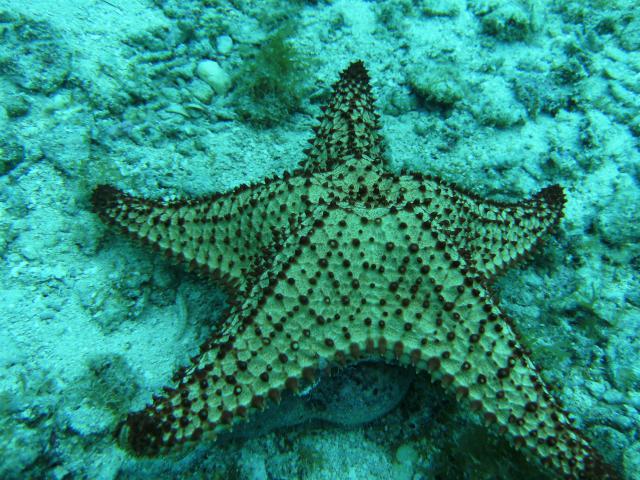
See the bluish color cast to the photo? Get used to it, because that's what is wrong with every other underwater photo I took last week. I am not sure if it was the flash intensity, the flash direction, the flash in general, or whatever other factor could be coming into play, but it is one I definitely will need to sort out before taking too many photos in Indonesia.
Stay tuned for more photos from the trip, and some fun dive stories!
- Bill
Metallic Gold Fly
ktuli — Sun, 06/06/2010 - 20:11
Sorry for the abrupt stop in updates. We've been having some water leaking into our basement (in like four different locations) with all this rain we've been having, so we've been spending our evenings and the entire weekend moving things around and cleaning up. I'm pretty exhausted.
So like the other day, I'm just taking the quick easy route and just posting a photo with no critiques or discussion - hope you don't mind.
If you haven't checked out the other posts from this set, scroll down and check out the rest of the posts, or go to the Table of Contents for the full list.

Technical Data: Canon EOS 7D, Sigma 150-500mm f/5-6.3 APO DG OS HSM with Kenko Teleplus PRO 300 "DG" AF 2x Teleconverter at 1000mm, 1/40 sec at f/14.1. ISO 200. Dolica AX620B100 tripod. No post production. Kanawha State Forest, Charleston, WV.
Feel free to post a comment with your own critique of this photo.
- Bill
Kanawha State Forest Spider (part 2)
ktuli — Fri, 06/04/2010 - 22:13
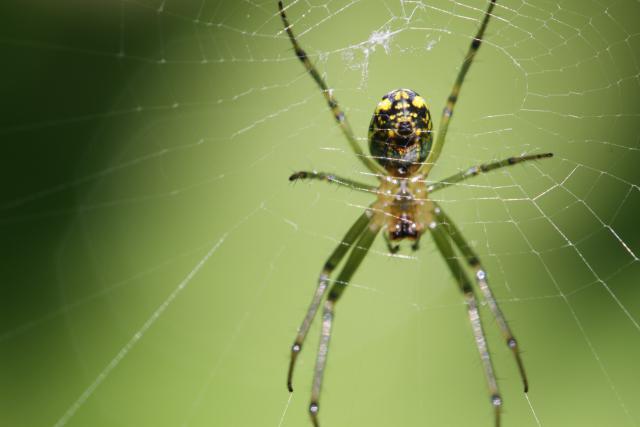
Technical Data: Canon EOS 7D, Tamron 180mm f/3.5 Di SP LD 1:1 Macro, 1/170 sec at f/7. ISO 200. Dolica AX620B100 tripod. No post production. Kanawha State Forest, Charleston, WV.
Resting Gorgone Checkerspot
ktuli — Wed, 06/02/2010 - 17:00
As promised, here's another photo of one of those Gorgone Checkerspot Butterflies. This little guy was willing to let me move in as close as my lens would allow (18.5 inches).
I moved around to a couple different angles and distances, but unfortunately was so focused on the butterfly and getting the images before he flew off that I only came up with this one image that I think works well.
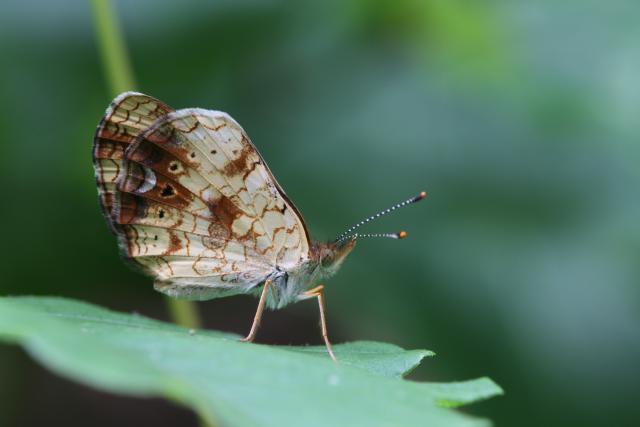
Technical Data: Canon EOS 7D, Tamron 180mm f/3.5 Di SP LD 1:1 Macro, 1/10 sec at f/9.1. ISO 200. Dolica AX620B100 tripod. No post production. Kanawha State Forest, Charleston, WV.
What Works: Focus is tack sharp with enough depth of field to keep most of the butterfly in focus (the very tips of its antennae are slightly blurred). The softly blurred background and framing with the offset butterfly is pleasing.
What Doesn't Work: The bright green grass stem in the background is a slight distraction, and if the antennae tips were in focus would be a bit nicer.
As I said, I took several other exposures of this guy, but none of them were just right. Everyone of them had some semi-major flaw with them that I was displeased with...

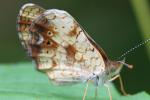
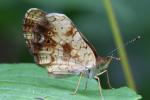
The image on the left has a weird convergence with the antenna tip and the eye of the butterfly. The center image shows my typical problem of cropping too closely in camera and cutting off key elements (antenna tip and feet in this case). While the third image has distracting background elements in a bad location right behind the butterfly's head.
That's why you take multiple exposures with a subject.
- Bill
Spider Strike Cropping
ktuli — Tue, 06/01/2010 - 20:23
So while we're on the subject of different framing, let's talk a bit about cropping to give yourself more framing options.
This is something I'm quite often guilty of not paying attention to, and unfortunately my error is usually in the sense that I crop too tightly in my original photograph (often cutting an element off) and not allowing myself room for software cropping later.
For this photo of a spider pouncing on its prey, I managed to leave myself room to crop...

Technical Data: Canon EOS 7D, Tamron 180mm f/3.5 Di SP LD 1:1 Macro, 1/21 sec at f/8. ISO 200. Dolica AX620B100 tripod. No post production. Kanawha State Forest, Charleston, WV.
After reviewing at home on the computer, I felt the image lacked impact with the spider being small within the frame. So I fired up Photoshop to see what cropping possibilities there were...

I am not entirely sure how I feel about the stem of grass in the vertical crop, but I didn't want to remove it and modify the image much for this discussion. However, the grass works just fine in the horizontal crop.
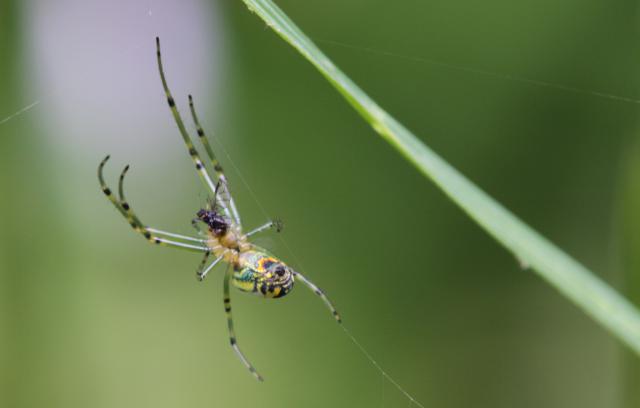
In general, I'm not really one to do much post production editing to my photos. I don't know if it is a perfectionism kind of thing, or just a dislike for edited photos (though one can argue whether simple cropping is much in the way of editing).
However, if I continue to find examples like this that open multiple possibilities from a single exposure, I may start turning that opinion around.
- Bill
PS: For a better view of this spider, check out my current favorite spider photo
Poll: Break from the Bugs
ktuli — Mon, 05/31/2010 - 17:31
So I guess we can take slight break from all the bugs (though if you've missed them, scroll down and check them out).
I took these two photos specifically with the thought in mind to try multiple framing options for a subject.
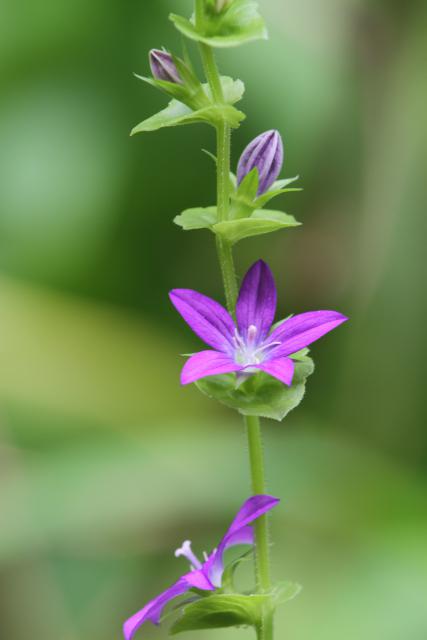
Close Crop
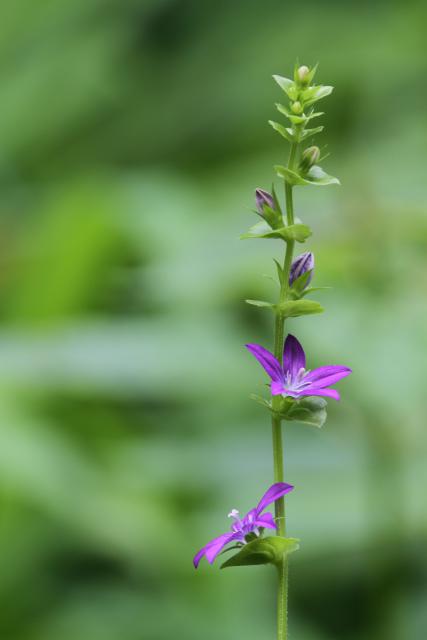
Wider Crop
Technical Data: Canon EOS 7D, Tamron 180mm f/3.5 Di SP LD 1:1 Macro, 1/32 and 1/50 sec at f/8. ISO 200. Dolica AX620B100 tripod. No post production. Kanawha State Forest, Charleston, WV.
Unfortunately I was using a prime lens, so I actually had to move the whole camera, so these aren't necessarily identical framing, but I still like both. Vote for your favorite and drop me a comment to let me know why.
- Bill

